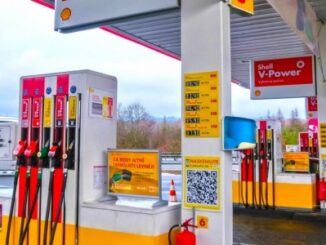
In 2023, gasoline consumption was where it had been 20 years ago, even as miles driven eked out a record, on more efficient ICE vehicles and the shift to EVs.
By Wolf Richter for WOLF STREET.
Gasoline consumption in the US, in terms of product supplied to gas stations, rose by 1.5% in 2023, to 376 million gallons per day.
This was down by 3.9% from 2019 and back where it had first been 20 years ago, in 2003, with two big troughs in between.
Gasoline consumption is determined by miles driven, which eked out a record in 2023, the growing efficiency of gasoline-powered vehicles, including hybrids, and the large-scale transition to EVs (the #2 bestselling model in the US in 2023 was an EV).
Per-capita gasoline consumption makes the scenario even clearer. As the population has grown over the last two decades, while gasoline consumption has gone nowhere, per-capita gasoline consumption has plunged by 15% from 2003 and by 21% from 1978:
The number of miles driven by highway-legal vehicles of all types – cars and light trucks, buses, motorcycles, delivery vans, medium-duty and heavy trucks – rose to 3,264 billion miles in 2023, squeaking past the prior record of 2019, according to estimates by the Department of Transportation. There are a lot more people, but they’re on average driving less:
Average fuel economy increased by 42% over the past 20 years, and average horsepower increased as well, thanks to technical innovations that made today’s ICE vehicles more powerful and more economical than ever before.
Since 1975, fuel economy for highway driving doubled from 14.6 mpg to nearly 30 mpg in 2023!
The growing efficiency of ICE vehicles has been a drag on gasoline consumption – a good kind of drag on gasoline consumption, caused by technical innovation.
The rising fuel economy of the vehicles in the national fleet has occurred despite the increasing popularity of trucks and SUVs that has years ago surpassed sedans. Note the progress since 2003:
And EVs are playing an increasing role in the reduction of demand for gasoline. In the US overall, EV sales rose to a share of 8.6% of all new vehicle sales in Q4, according to Experian.
In California, the largest vehicle market in the US, sales of new vehicles with internal combustion engines (ICE) of all types, including hybrids and plugin hybrids, have plunged by 30% since 2016, according to registration data. At the same time, EV sales have soared. And the share of EV sales reached 21.4% of total sales in 2023.
This shift to EVs is working itself very gradually into gasoline consumption, pushing it down, and into electricity consumption, pushing it up. And the grid can handle the EVs just fine, even California’s grid, as we’re finding out. The electric utilities love it. Their sales go up, and they finally get to make some revenues at night on their huge amount of idle capacity as EV owners top off the batteries at home.
With less demand for gasoline domestically, the US has become a significant exporter of gasoline, even states such as California. Exports of gasoline, diesel, and jet fuel accounted for about 21% of the record 10.1 million barrels per day of crude oil and petroleum products that the US exported in 2023.
Take the Survey at https://survey.energynewsbeat.com/
ENB Top News
ENB
Energy Dashboard
ENB Podcast
ENB Substack



